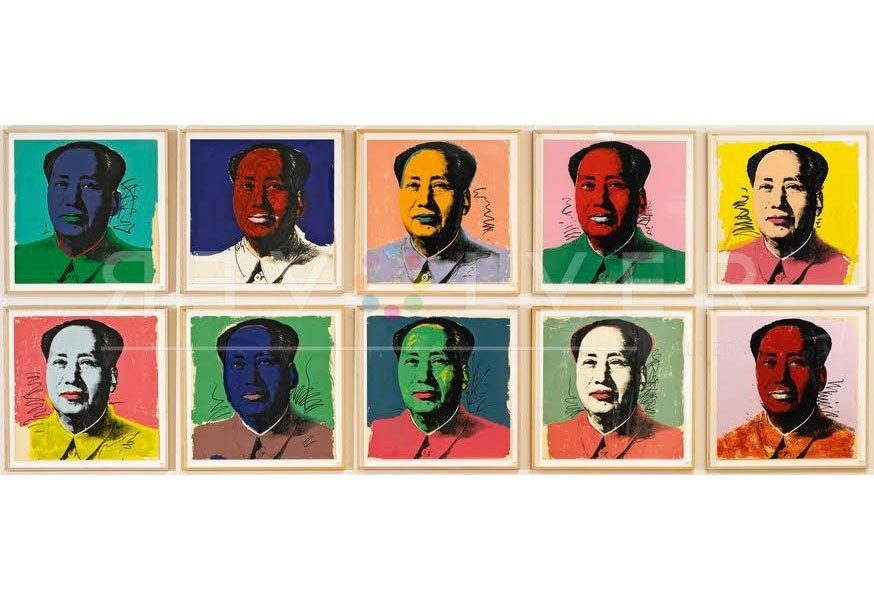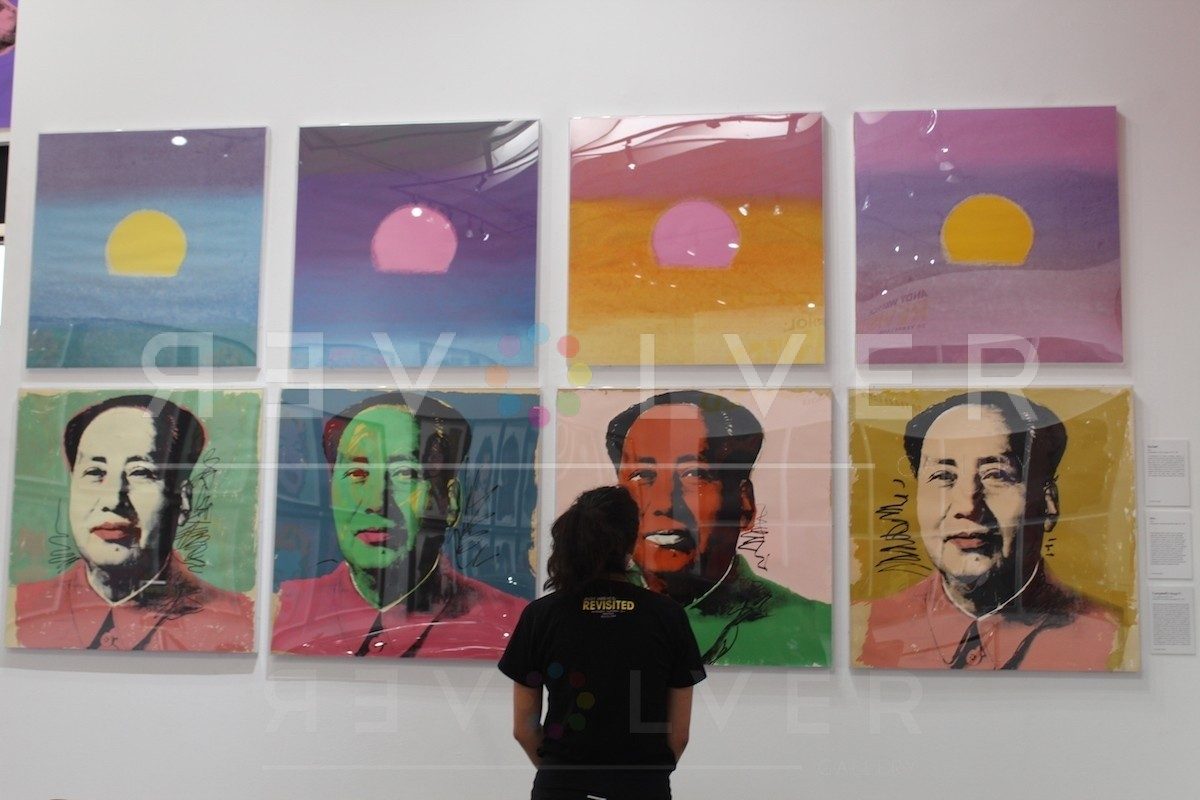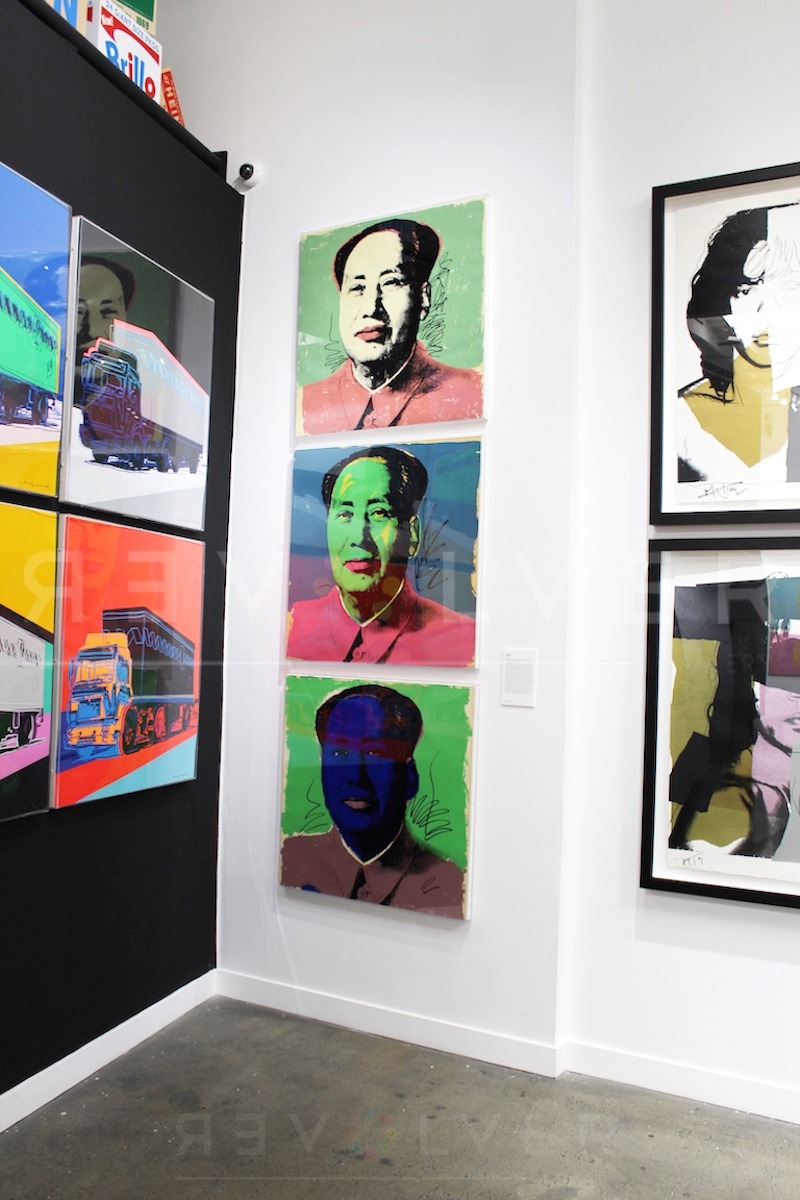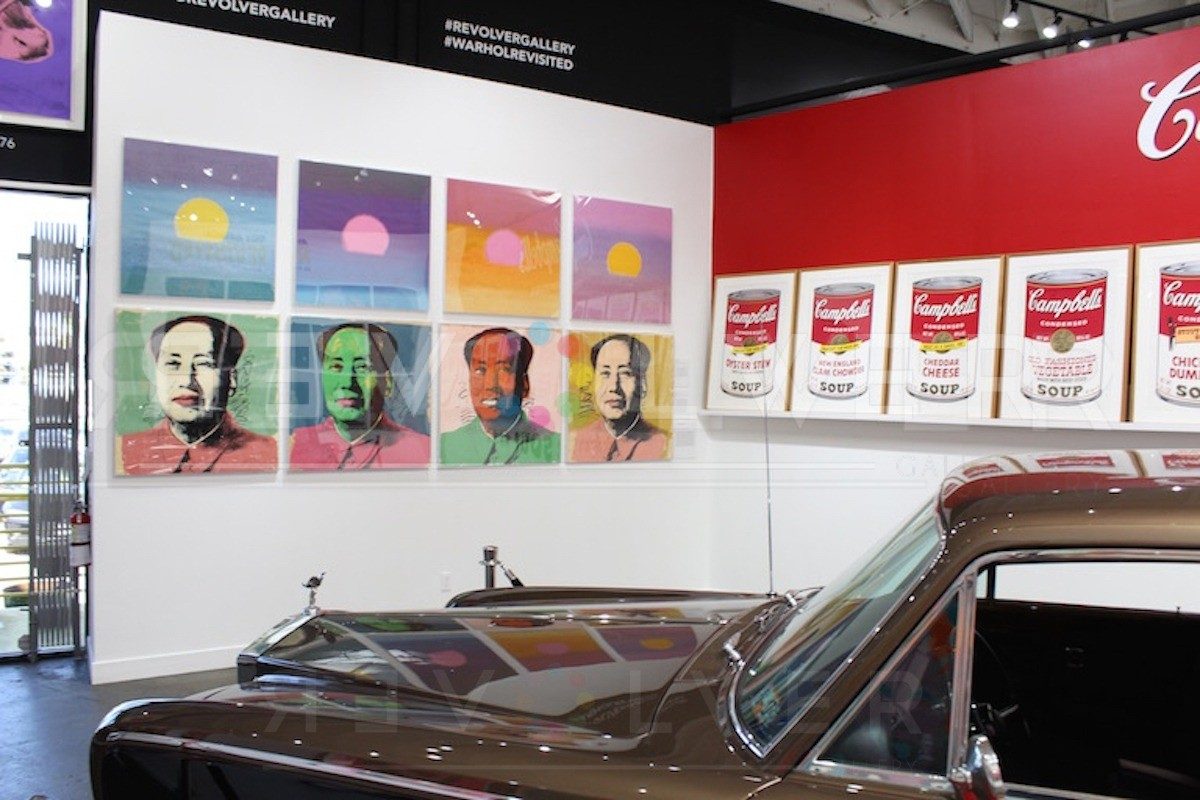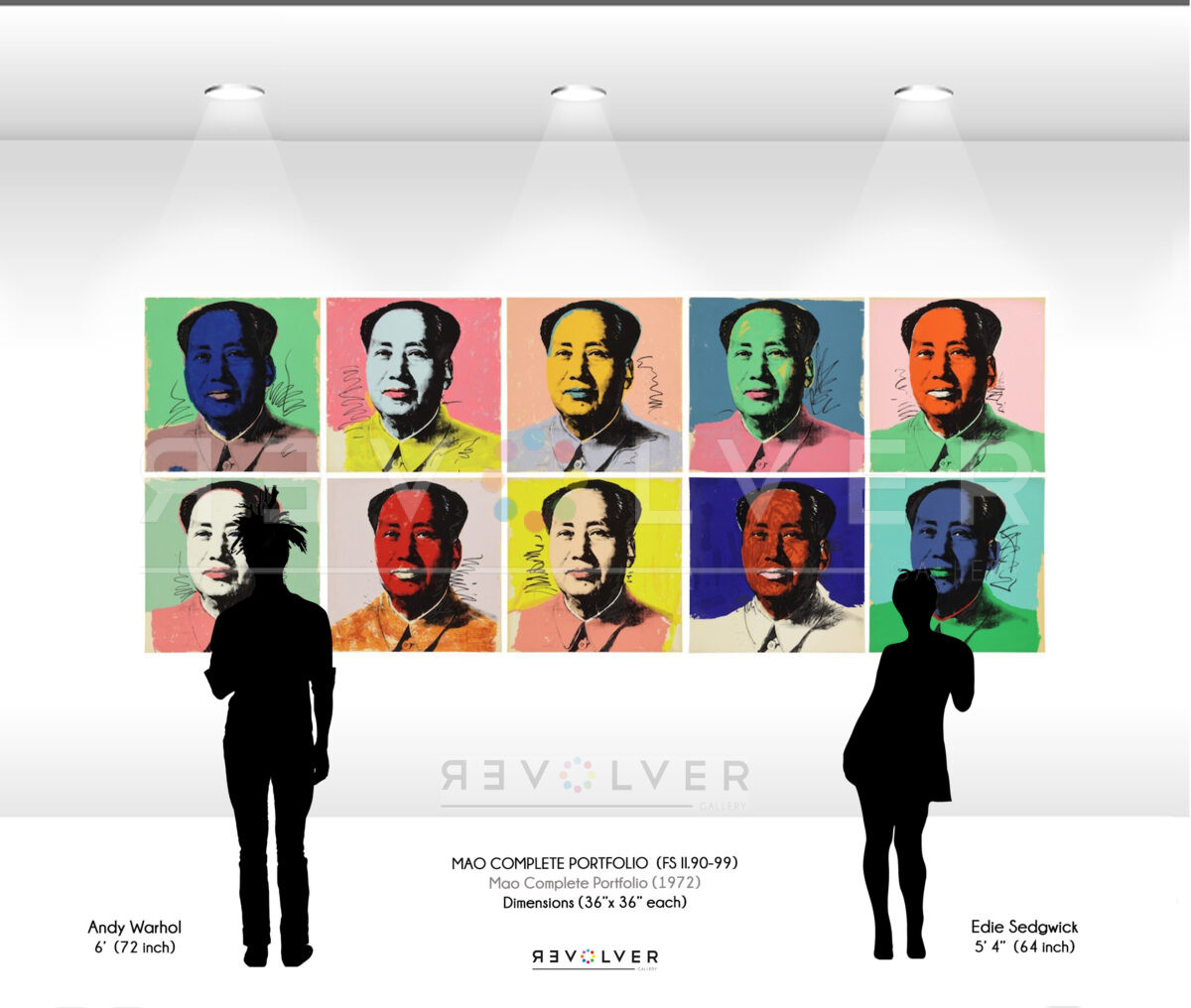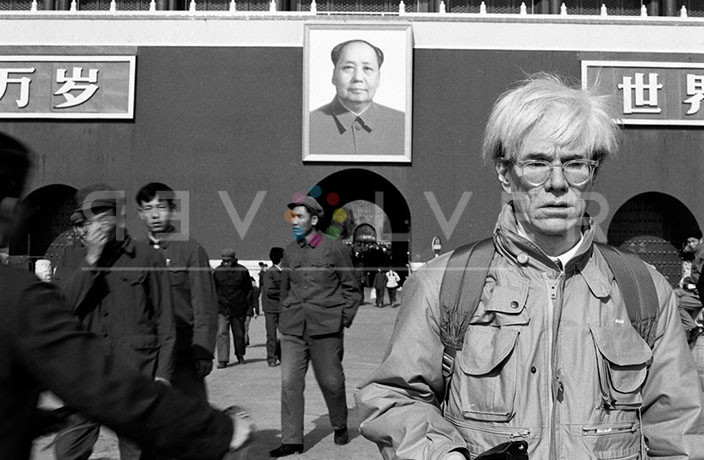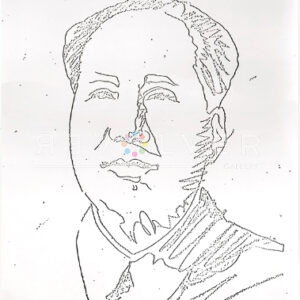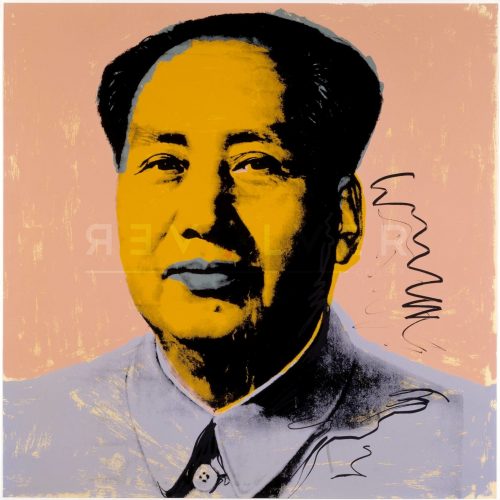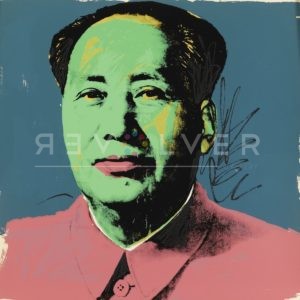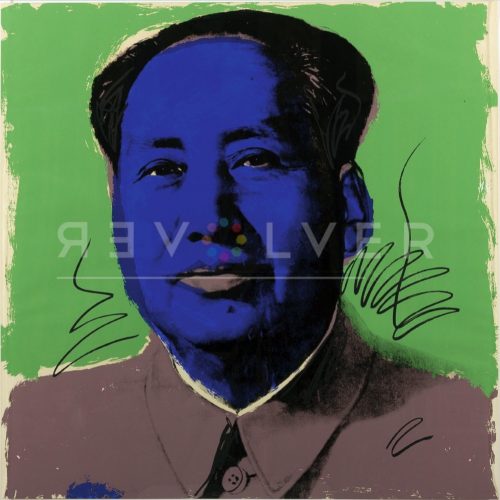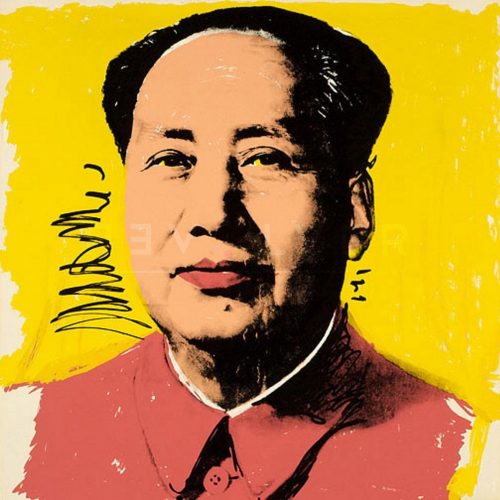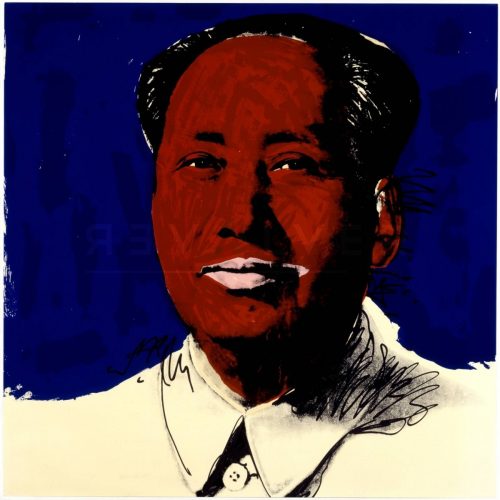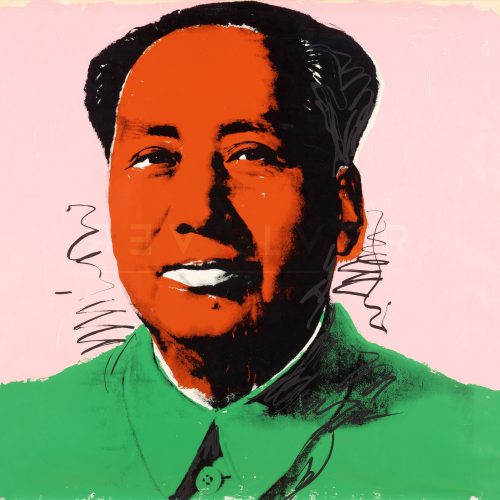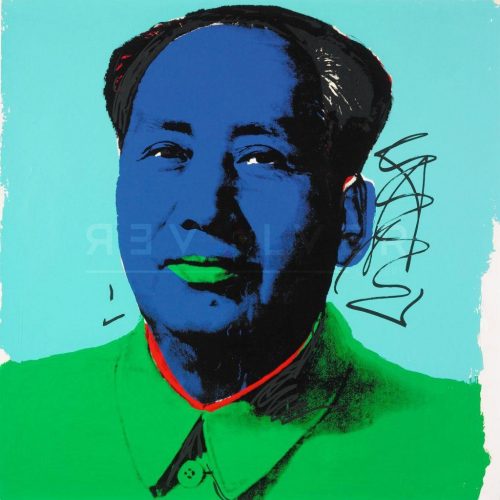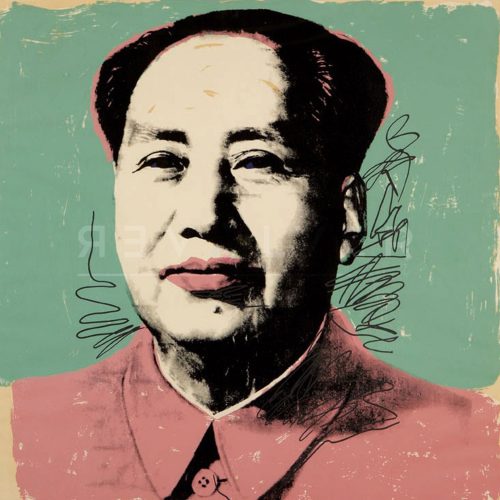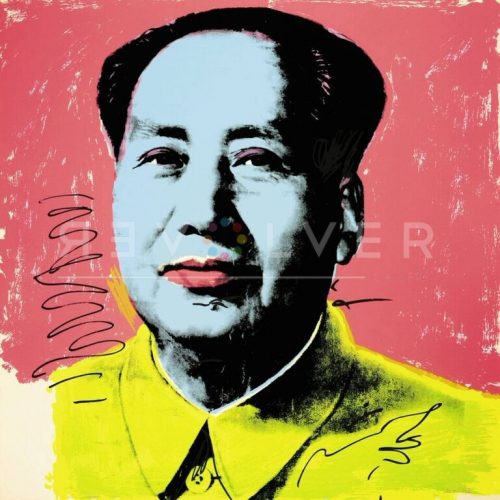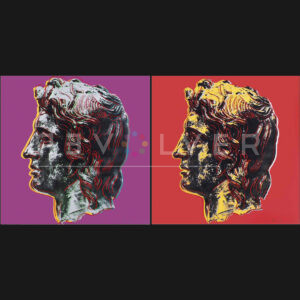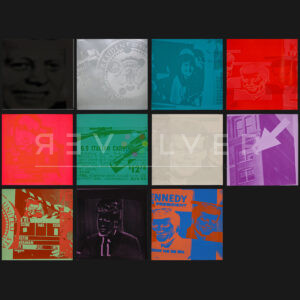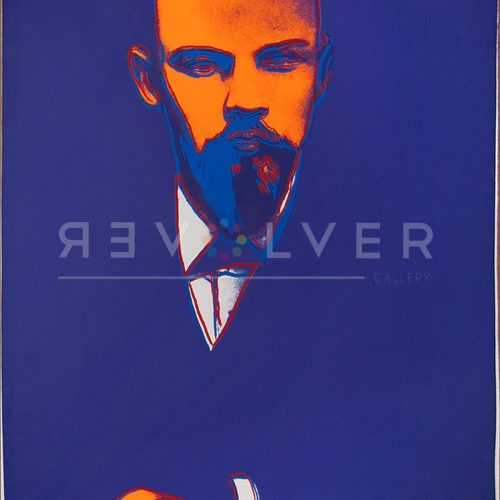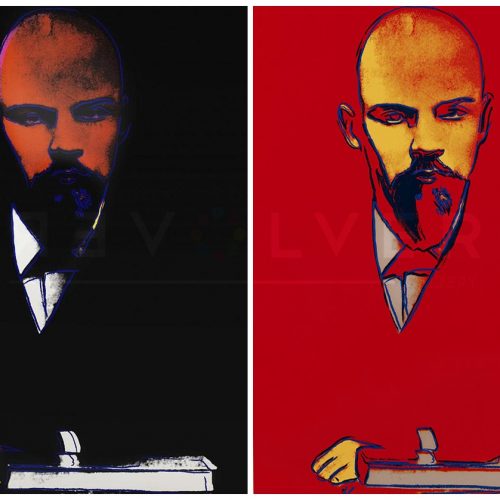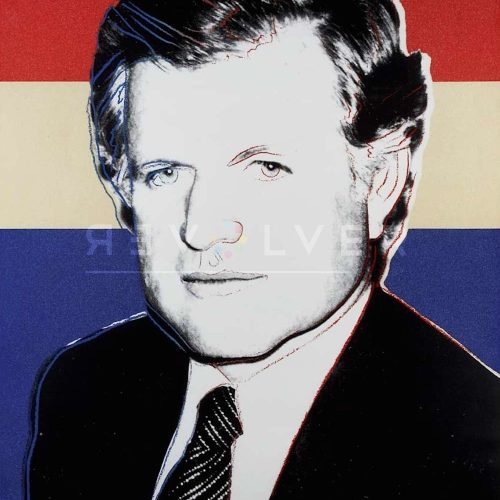Andy Warhol published the Mao complete portfolio in 1972. It is one of Warhol’s most iconic and controversial series, comprising 10 screenprints of Mao Zedong in bright Pop Art colors.
By the time Andy Warhol transformed the founder of the People’s Republic of China into a pop-art icon, Mao Zedong had immortalized himself and greatly transformed China; but the Cultural Revolution was coming to an end. In the late 1970s, economic reforms began to nudge China away from the command economy, and Warhol’s silkscreen adaptation of Mao foreshadowed China’s eventual shift into western markets. His decision to rework Mao’s globally recognizable portrait would create an interesting synthesis between PRC propaganda and mainstream pop art. One could now touch Mao’s portrait, thus inviting a critical gaze.
The complete Mao portfolio is a significant artistic reification of the public relations campaign that took place between the US and China in the early 70s. In February of 1972, Richard Nixon returned from his visit to China, where he and Mao discussed their growing concerns with the Soviet Union’s military strength. Shortly after, Warhol began to materialize his interest in the influence of Mao and his legacy. He expressed his initial intrigue in 1971, saying “I have been reading so much about China. They’re so nutty. They don’t believe in creativity. The only picture they ever have is of Mao Zedong. It’s great. It looks like a silkscreen”. The celebritization of Mao was a controversial topic, and Mao himself discouraged media-driven renown. But his image became synonymous with his rule, turning him into a great political and cultural symbol. Consequently, his portrait became primed for Warhol’s artistic manipulation.
By transgressing the strict standards surrounding the depiction of the communist leader, Warhol’s Mao portfolio sparked controversy after its debut. The usual depictions of Mao relied on warm hues and uplifting themes, meant to inspire loyalty and revolutionary attitudes. However, the vibrant colors in Warhol’s prints made Mao as fashionable as Mick Jagger or Marilyn Monroe. For Warhol, Mao was the most famous person in the world. By alienating Mao’s portrait from its usual emblematic look in China, Warhol left his mark on a globally recognizable leader.
With his opportunism, Warhol concerned himself with many other world leaders through his artwork. He created prints depicting John F. Kennedy, Richard Nixon, and Jimmy Carter, each of which calling into question his impartial political stance. No matter the subject, Warhol used his evolving printmaking techniques and bold coloring process to bring out (or simply create) the eccentricities of his subjects, often controversially. Even decades later, during Warhol’s worldwide retrospective, Chinese officials found the Pop Art makeover of Mao intolerable. When the exhibition arrived in China in 2013, Chinese officials removed eight Mao prints from the event, concerned about their resemblance to makeup. They worried that people may confuse the coloration with cosmetics.
By design, the legacy of Mao is forever. The art of design that Warhol mastered had a considerable hold on the mainstream art world. By perfectly seizing the means of artistic expression, Warhol ensured his own eternal legacy.
The Mao complete portfolio was printed in 1972 by Styria Studio, Inc in New York, as a portfolio of ten screenprints on Beckett High White Paper. There are 250 prints, signed in ball-point pen and numbered with a rubber stamp on verso. There are also 50 Artist Proofs signed and numbered in pencil on verso; some signed and numbered in ball-point pen. Included in this portfolio are: FS II.90-99.
Mao as Part of Andy Warhol’s Larger Body of Work
Warhol created the Mao series during the early 1970s when he was taking many commissions for celebrities. Celebrity portraits developed into a significant aspect of his career and a main source of income. Other series produced during this time are the Mick Jagger portfolio, Muhammad Ali portfolio and unpublished works of various celebrities such as Truman Capote. However, Andy Warhol was also particularly interested in political figures throughout his career. In addition to his Mao portfolio, Warhol created prints of leaders such as Vladimir Lenin, Alexander the Great and John F. Kennedy.

